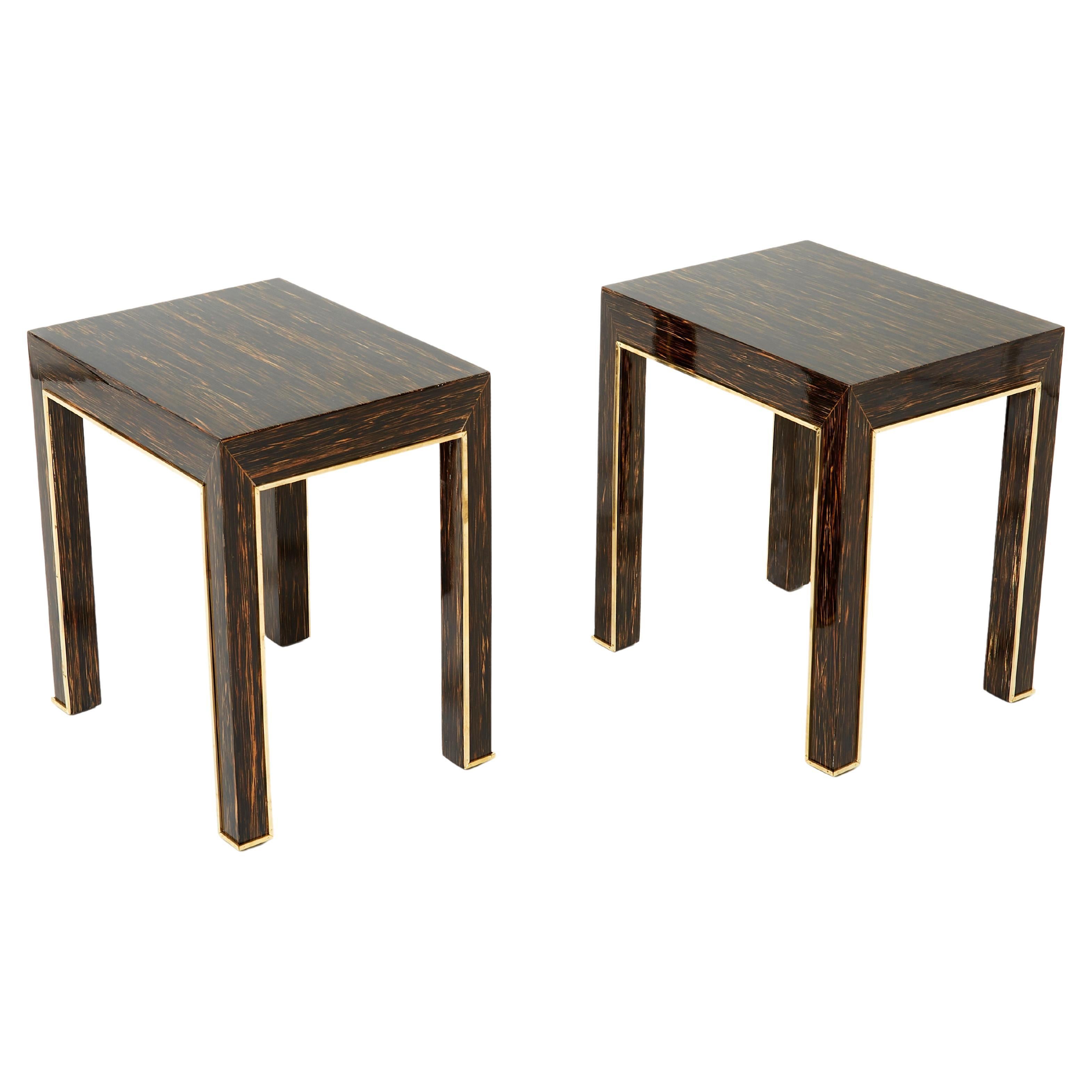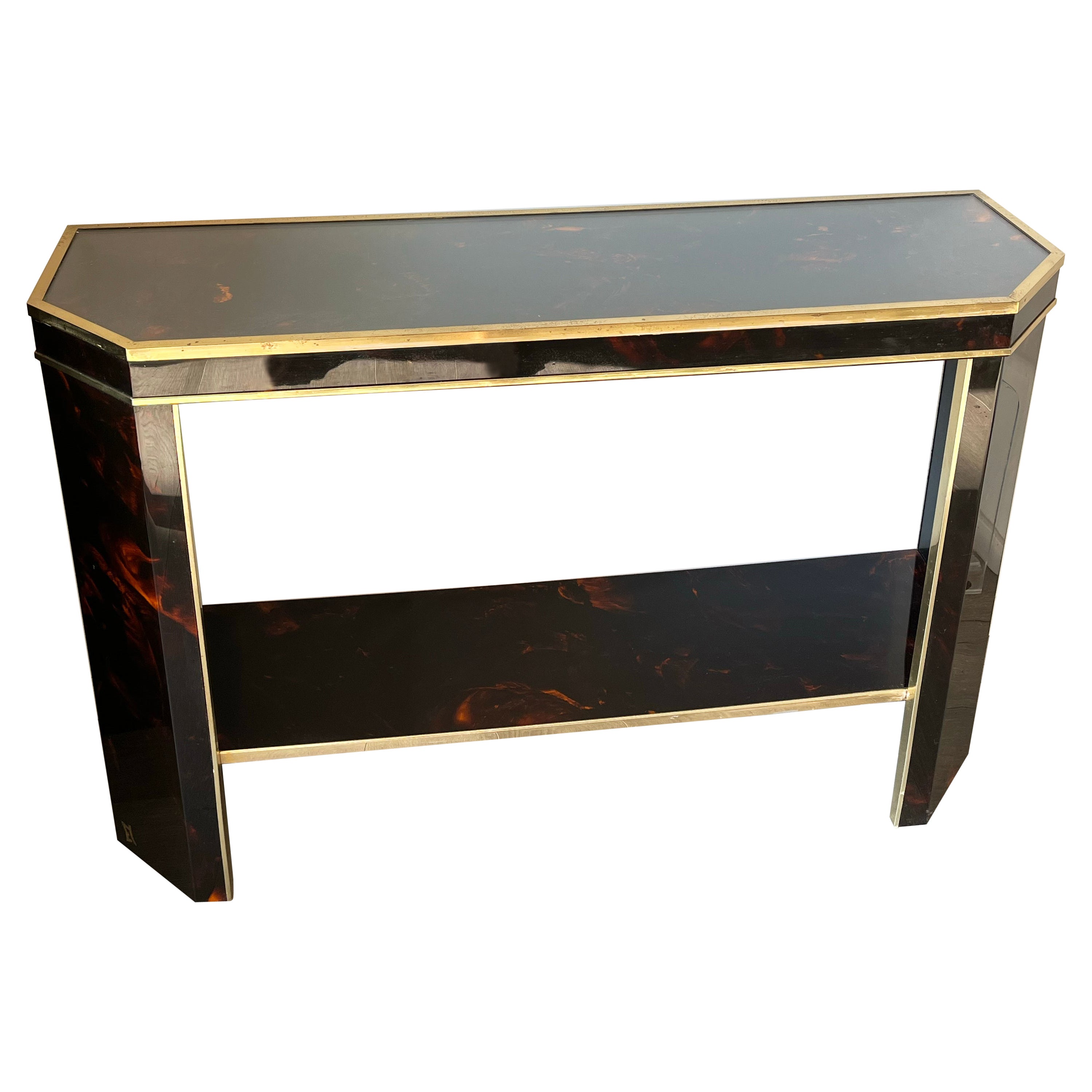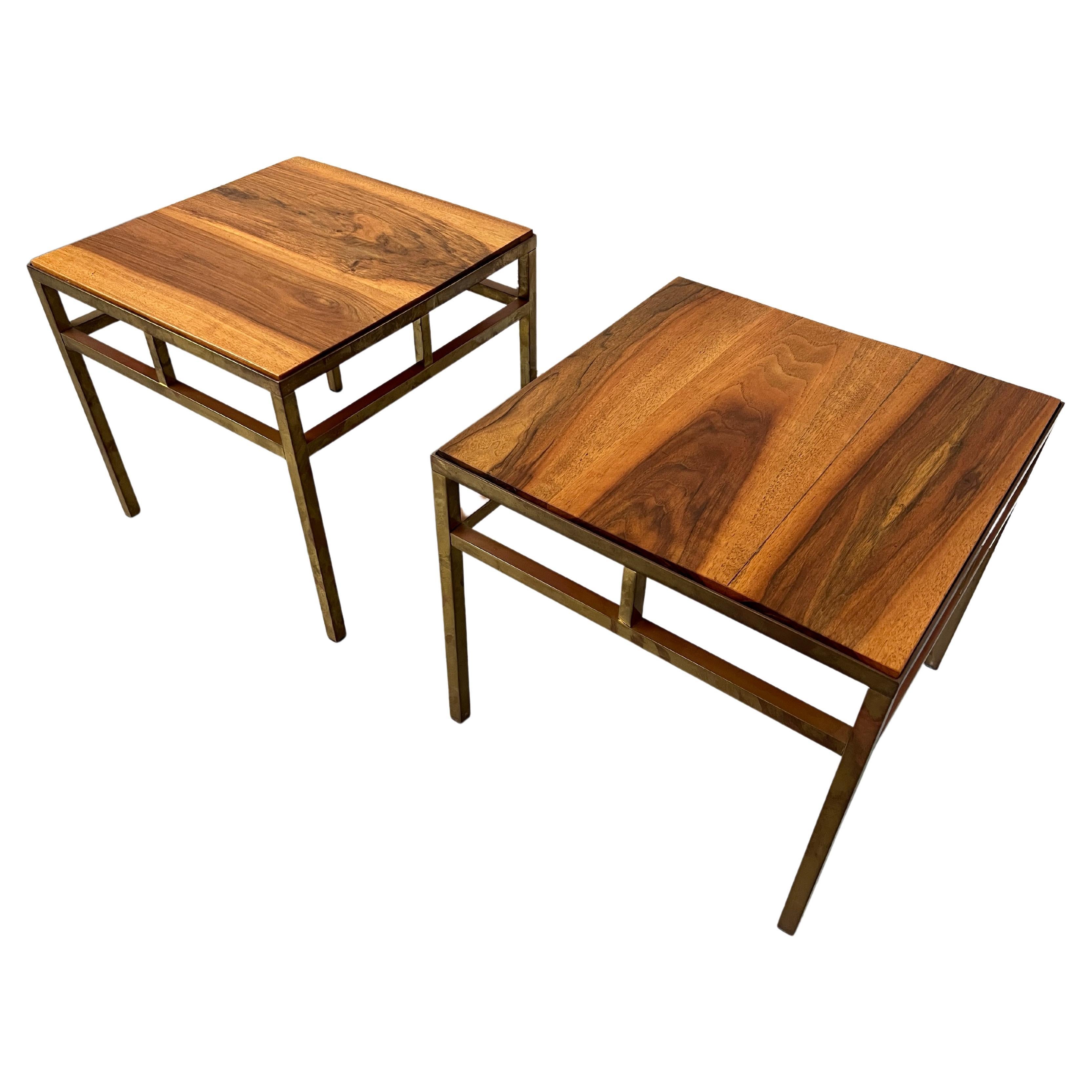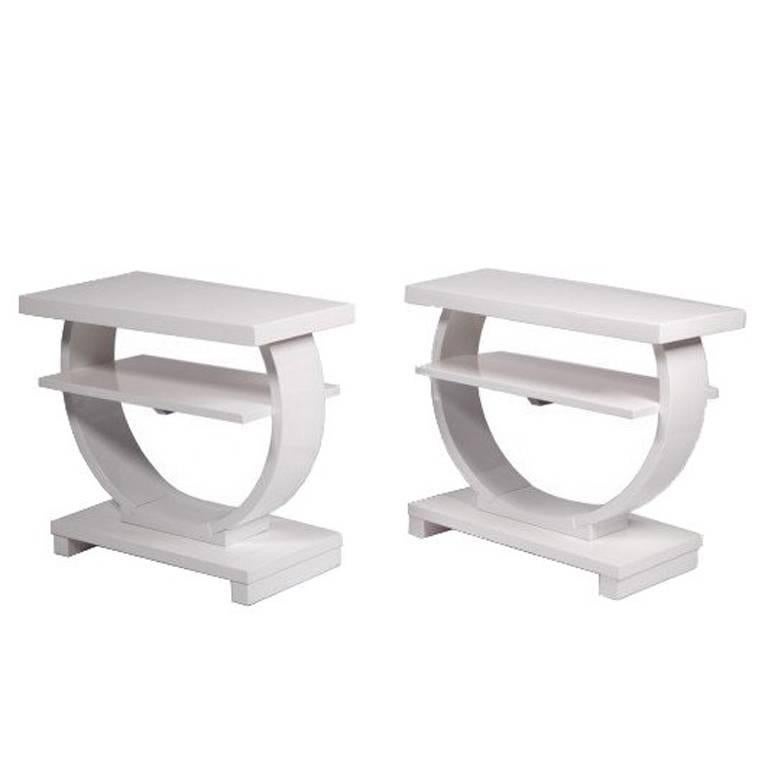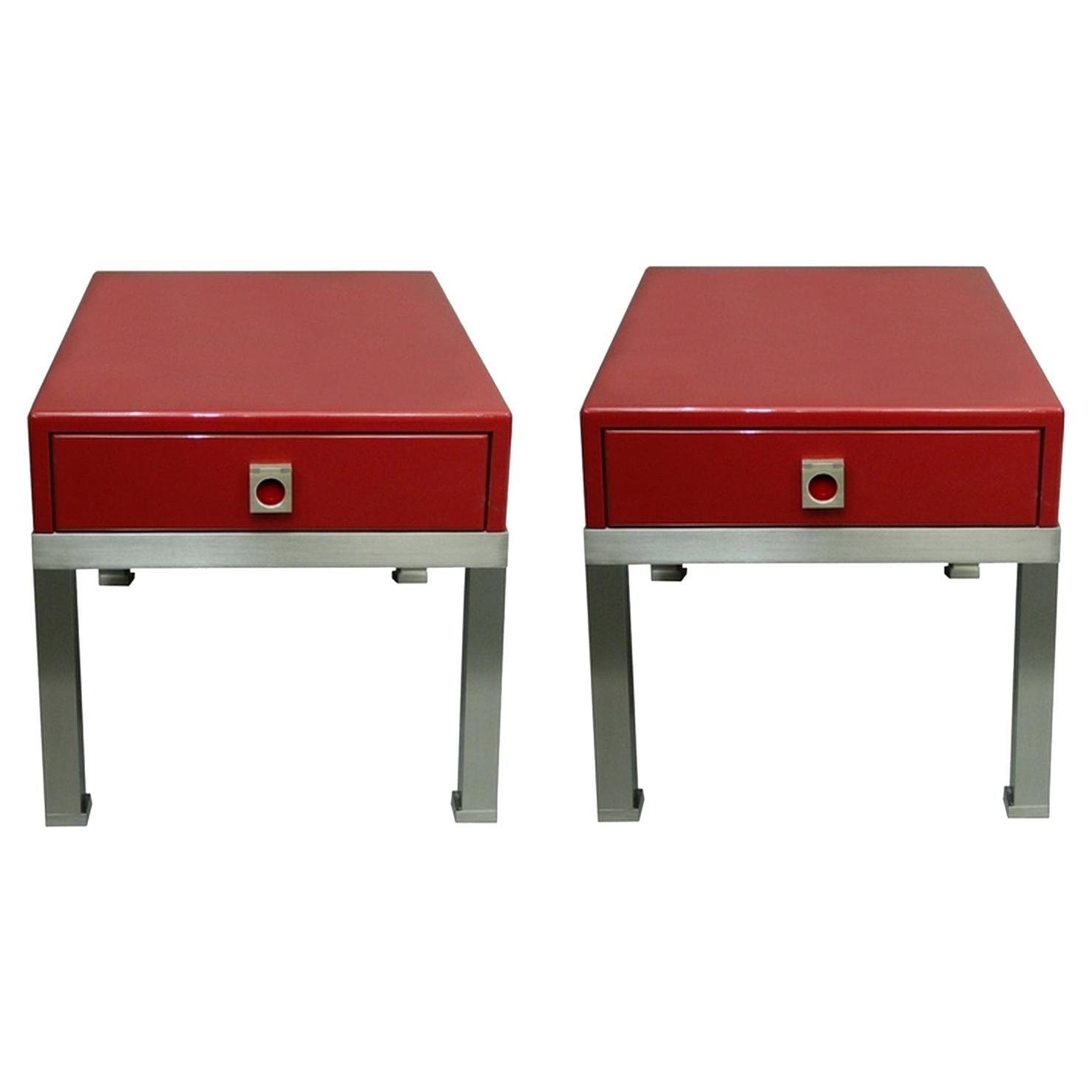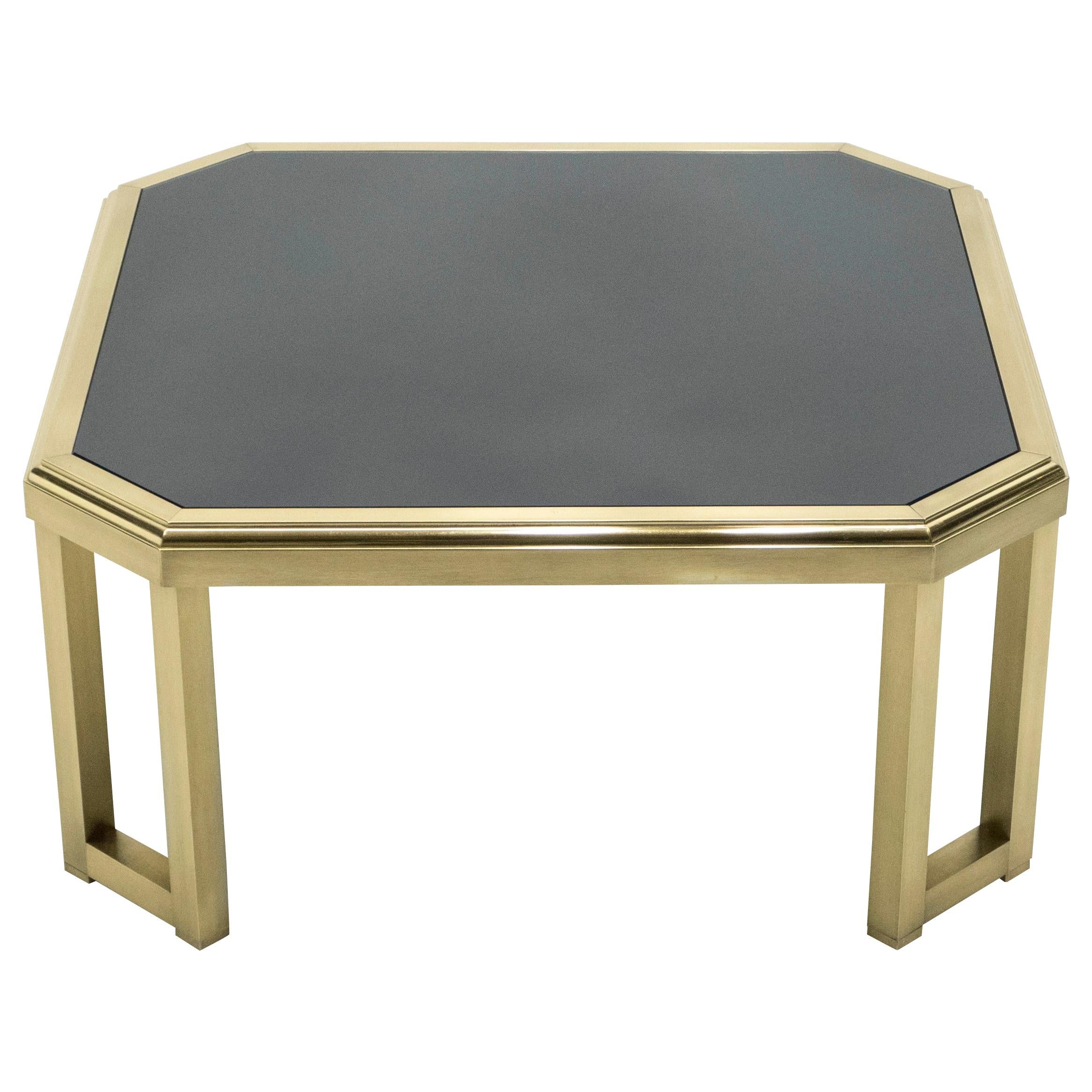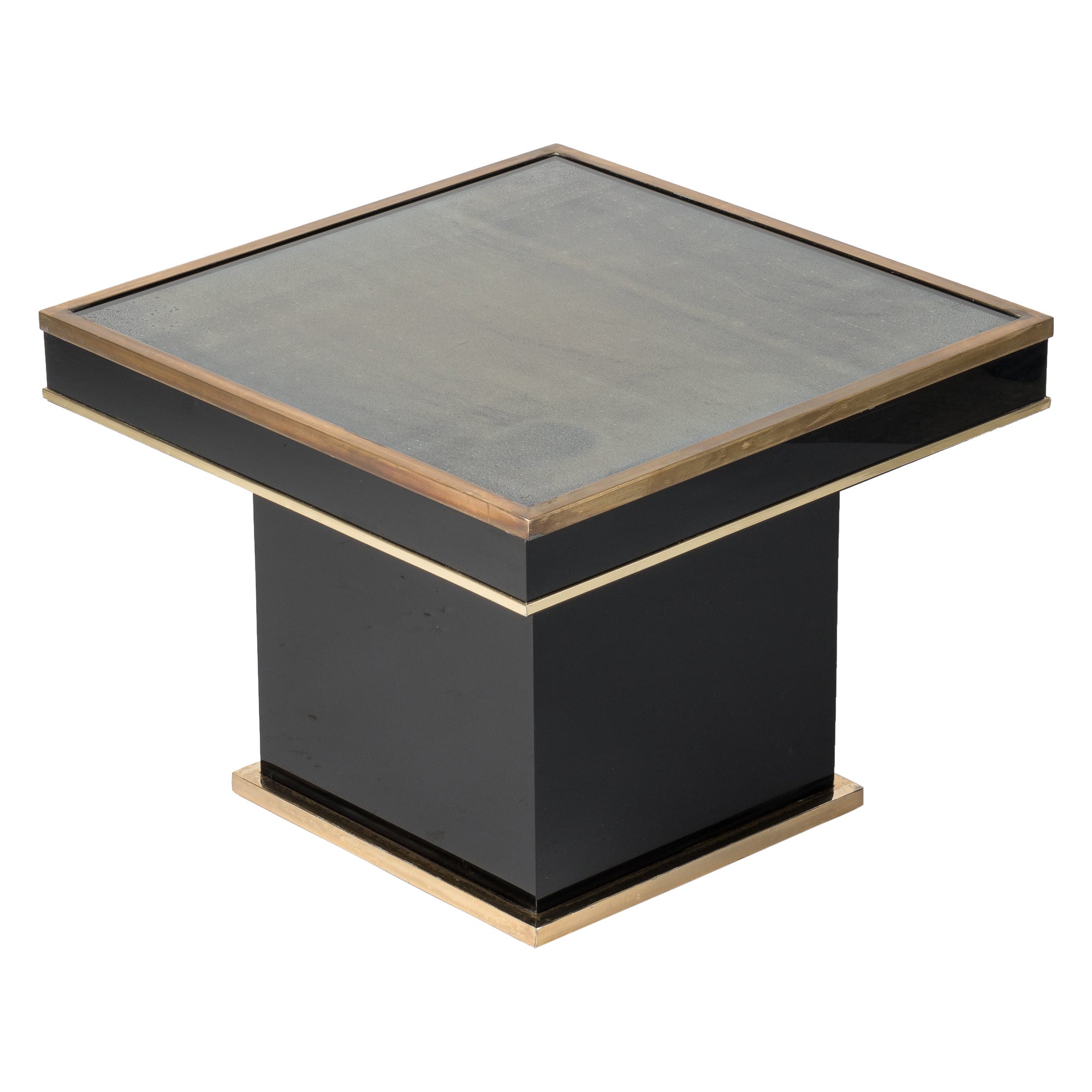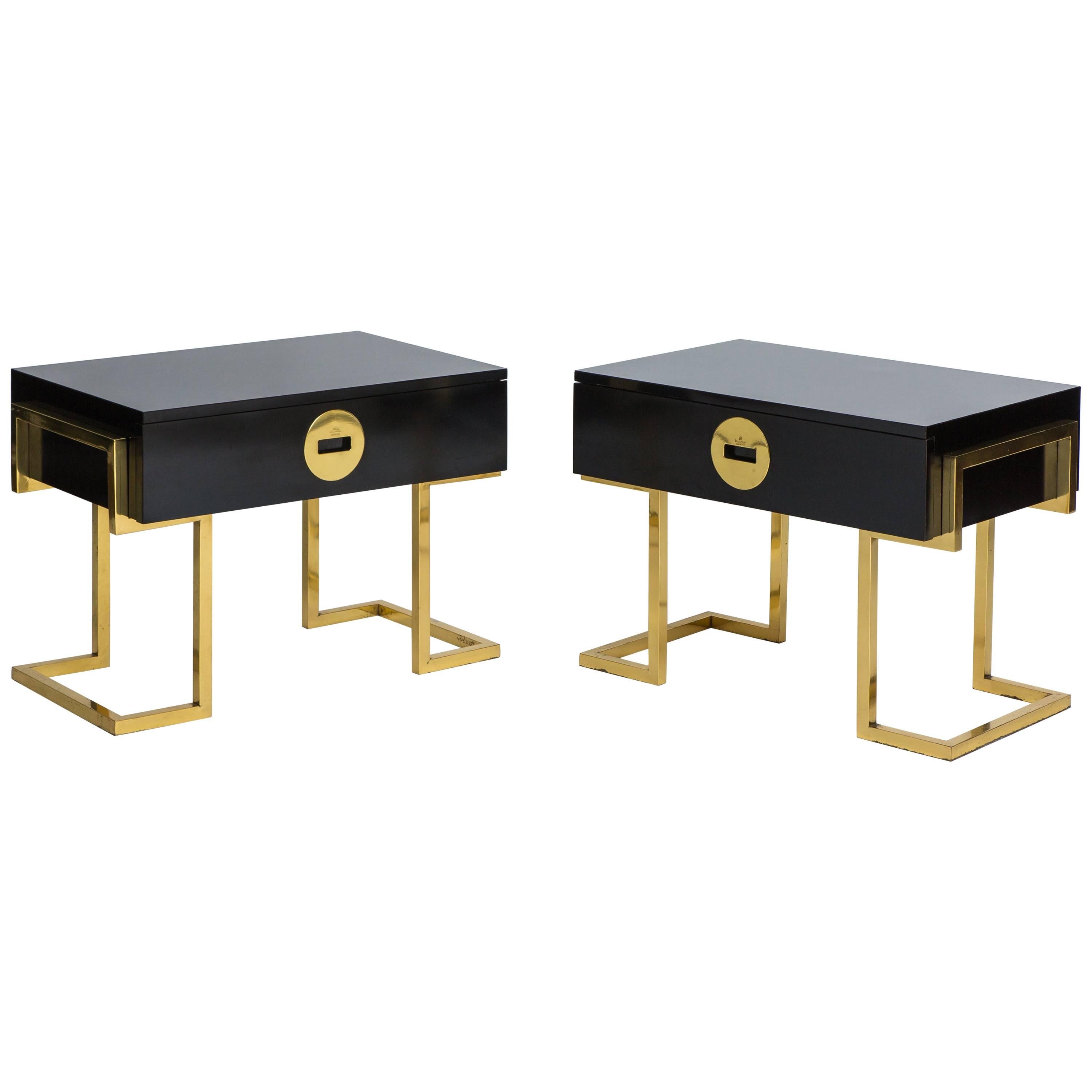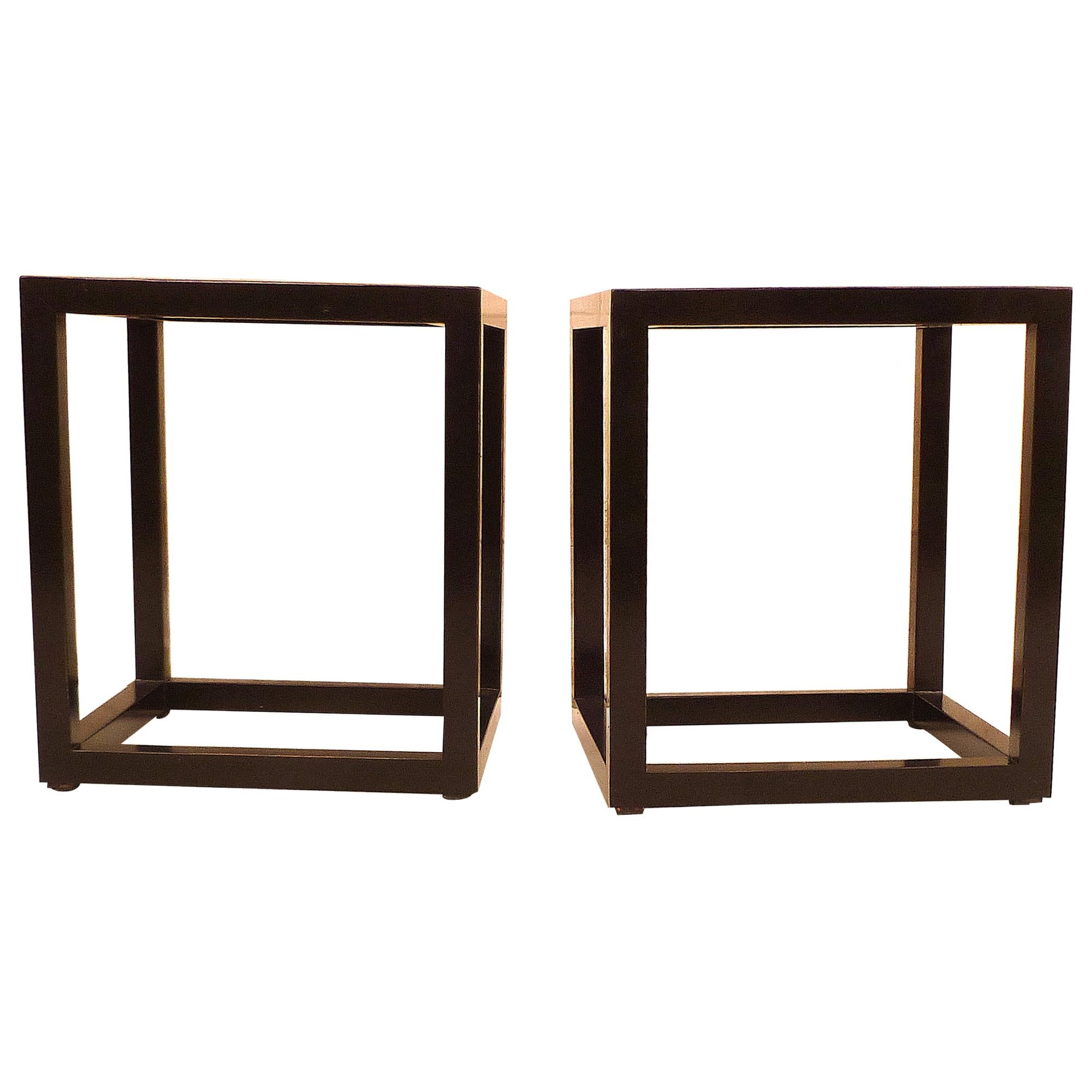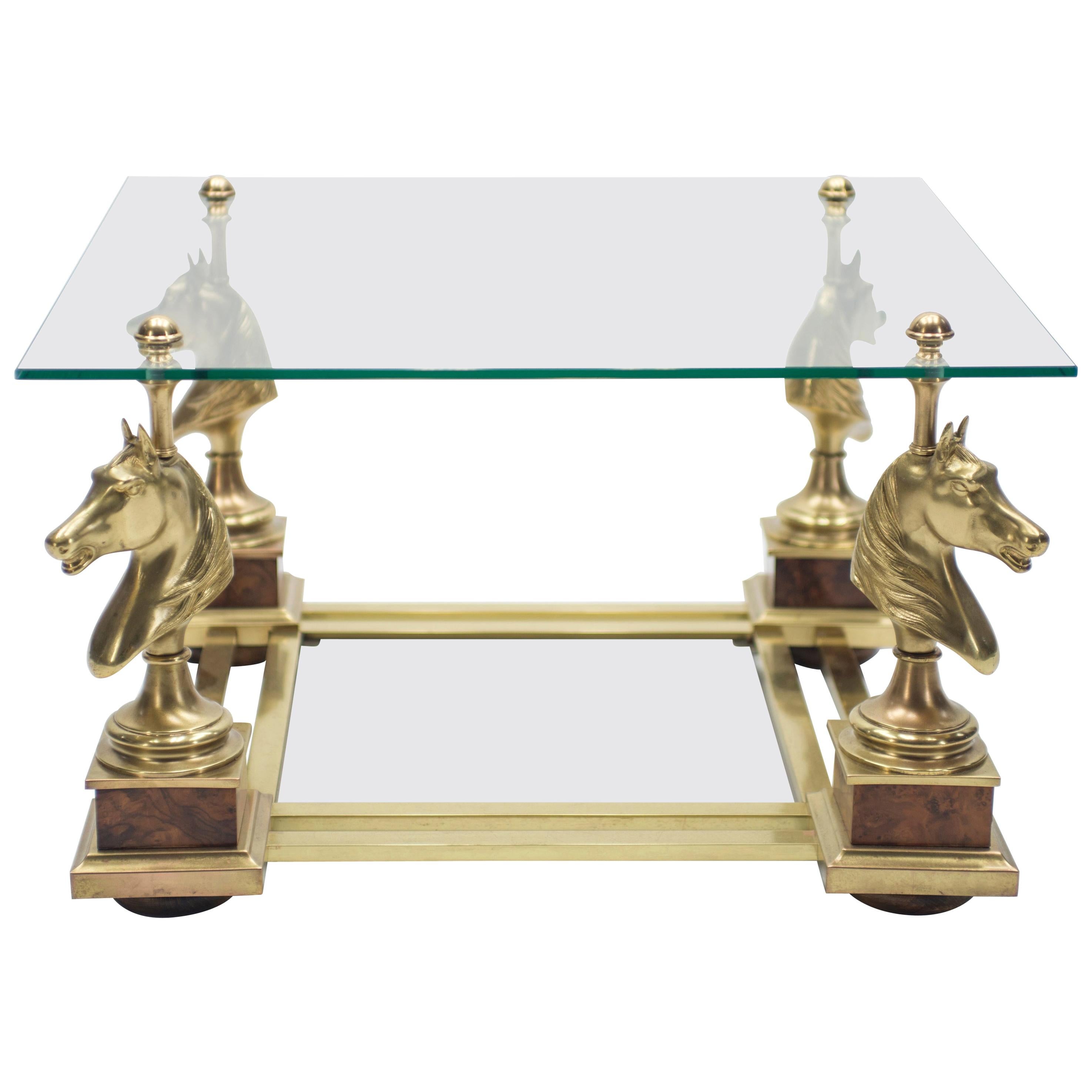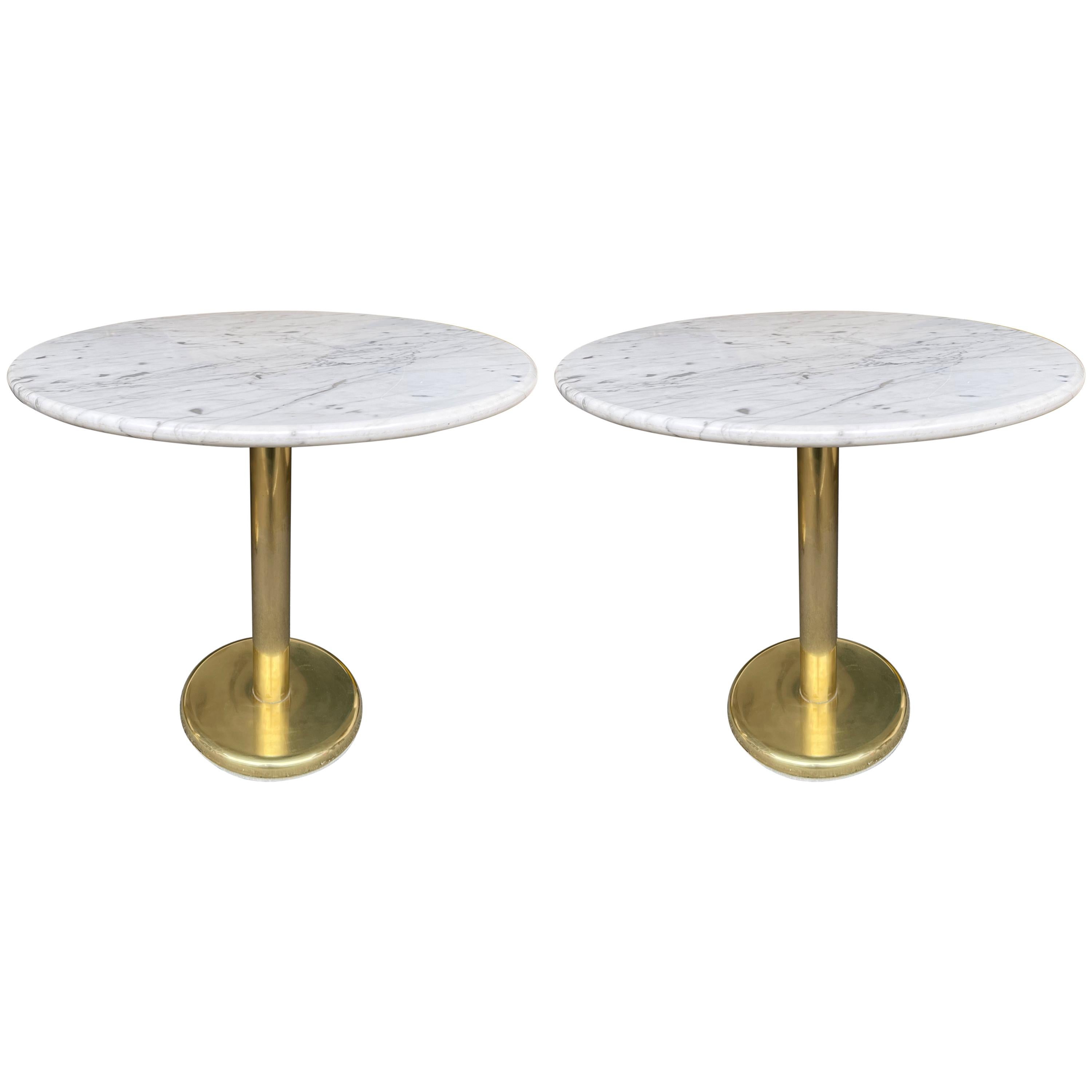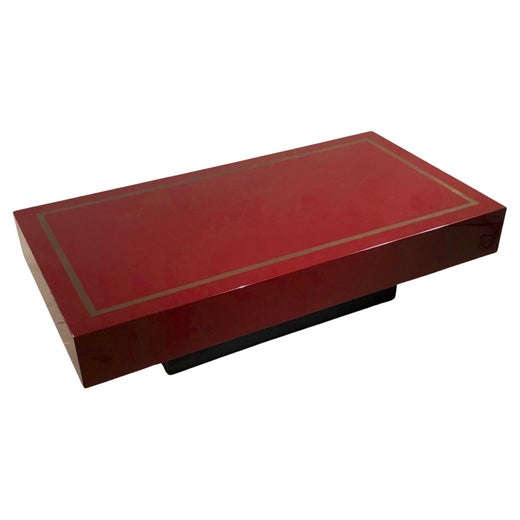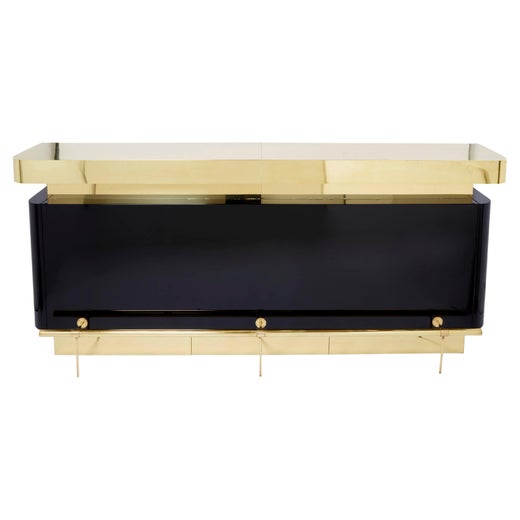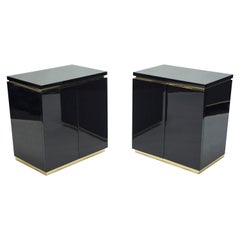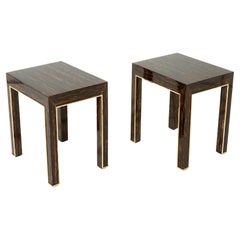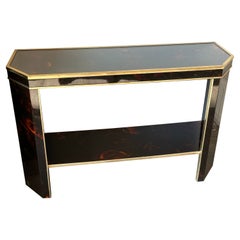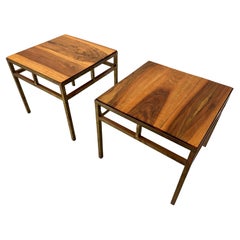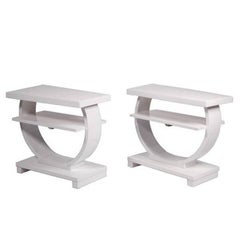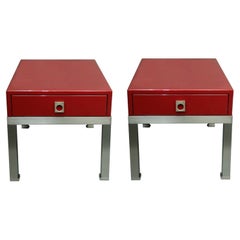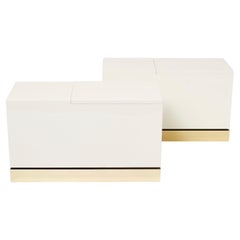
Pair of Trunk End Tables by J.C. Mahey Brass White Lacquered 1970s
View Similar Items
Pair of Trunk End Tables by J.C. Mahey Brass White Lacquered 1970s
About the Item
- Creator:Jean Claude Mahey (Designer),Romeo Paris (Manufacturer)
- Dimensions:Height: 19.69 in (50 cm)Width: 33.47 in (85 cm)Depth: 13.78 in (35 cm)
- Sold As:Set of 2
- Style:Mid-Century Modern (Of the Period)
- Materials and Techniques:
- Place of Origin:
- Period:
- Date of Manufacture:1970
- Condition:Refinished. Wear consistent with age and use. Restoration work : Yes - Relacquered.
- Seller Location:Paris, FR
- Reference Number:1stDibs: LU3020326338322
Jean Claude Mahey
French designer Jean Claude Mahey is best known for his elegant Hollywood Regency and Art Deco–style burl wood furniture. Vintage Mahey tables, mirrors and case pieces are often embellished with decorative techniques so that the rich, sumptuous materials he uses are paired with marquetry, lacquer, marble elements or brass accents that renders his furniture striking in contemporary dining rooms and living rooms.
Born in Mayenne, France, in 1944, Mahey found himself surrounded by a close family of painters and decorators. He graduated from the College of Applied Arts of Paris in 1966. From 1967 to 1976, Mahey worked for several luxury furniture manufacturers such as Maison Jansen, Roche Bobois, Maison Romeo and Maville Interiors. In 1976, he decided to make the bold move of striking out on his own and founded his namesake furniture design company.
Besides his love of marquetry, Mahey was interested in perfecting a heavy lacquer technique that produced mirror-like finishes and softened hard edges. Lacquered furniture and decor have long been cherished by design lovers. In the 18th century, European and English royals adored Japanese lacquerware.
During the Art Deco period, French furniture designers partnered with Japanese lacquerers to create a whole new genre of shimmering cabinetry — Jean Dunand learned the techniques from Japanese lacquer master Seizo Sugawara and introduced his first of many lacquered pieces in 1921. Dunand wasn’t the only Art Deco designer to use the material (Irish architect Eileen Gray famously did so too), but he employed it much more prolifically and decoratively. Collectors greatly admire and seek out Mahey’s lacquered chests of drawers and cabinets.
Today Mahey’s atelier is still family-led. Working closely with his wife, Betty, they have created many successful designs popular throughout France and around the world. In 1992, he opened his current showroom in the center of Paris and soon after, his children Cecilia and Maxence joined the family firm.
On 1stDibs, find vintage Jean Claude Mahey tables, storage pieces, lighting and more.
Romeo Paris
With styles ranging from mid-century modern and modern to Hollywood Regency and Louis XIV, Roméo Paris is renowned for its eclectic, opulent and original furniture designs.
Roméo Paris is the brainchild of Claude Dalle, a cabinetmaker, architect and influential figure in the world of Parisian interior design. After working in a warehouse, Dalle decided to produce his own line of furniture in the 1960s. Soon after, Dalle’s exquisite and sophisticated furniture — inspired by the styles of André-Charles Boulle and Louis XIV — garnered international attention and acclaim. It was then that Dalle founded Roméo Paris to produce furniture based on the principles of “extravagance, juxtaposition, eclecticism and French expertise.”
To fulfill Dalle’s vision of creating furniture that conveyed elegance and royal grandeur, the furniture house worked with luxury fabric manufacturers and houses such as Pierre Frey, Missoni, Versace, Houlès and Tassinari & Chatel.
Roméo Paris has collaborated with notable French designers, such as Jean Claude Mahey, to create both classic and contemporary pieces. During the 1970s, Mahey’s designs included crisp, white lacquered trunk end tables made with brass accents, chic and retro black lacquered cabinets, steel bouclé bar stools and wall mirrors framed with brass and black lacquer. Around this time, Roméo Paris was known for its sleek glass coffee tables featuring sculptural bases.
Throughout the 1980s, Roméo Paris produced “inclusion” table lamps made with lucite and embedded with materials like brass discs, colored stones, agates and translucent leaves. Its lighting designs also included a fashionable lacquered wood and plastic floor lamp, modeled after a lamp by Eugène Printz, which he designed for the 1937 Exposition Internationale des Arts et Techniques in Paris.
Today, Roméo Paris has a showroom in Paris — the Roméo Royal Gallery on the Avenue des Champs-Élysées — offering furniture prized by interior designers and collectors of luxury home decor. Its pieces have been featured in major publications, such as Vogue France, Architectural Digest, ELLE Decoration, Florida Design and Les Plus Beaux Intérieurs.
On 1stDibs, discover a range of vintage Roméo Paris lighting, case pieces and storage cabinets, tables and more.
More From This Seller
View AllVintage 1970s French Mid-Century Modern Cabinets
Brass
Vintage 1970s French Mid-Century Modern End Tables
Palmwood
Vintage 1970s French Mid-Century Modern Dry Bars
Brass
Vintage 1970s French Mid-Century Modern Sideboards
Brass
Vintage 1970s French Mid-Century Modern Side Chairs
Wood
Vintage 1970s French Mid-Century Modern Cabinets
Brass
You May Also Like
Vintage 1970s French Mid-Century Modern Console Tables
Brass
20th Century Unknown Mid-Century Modern End Tables
Brass
Vintage 1940s American Art Deco End Tables
Mahogany
Vintage 1970s French End Tables
Brass, Nickel
Vintage 1980s French Side Tables
Brass
Vintage 1970s Italian Mid-Century Modern End Tables
Brass
